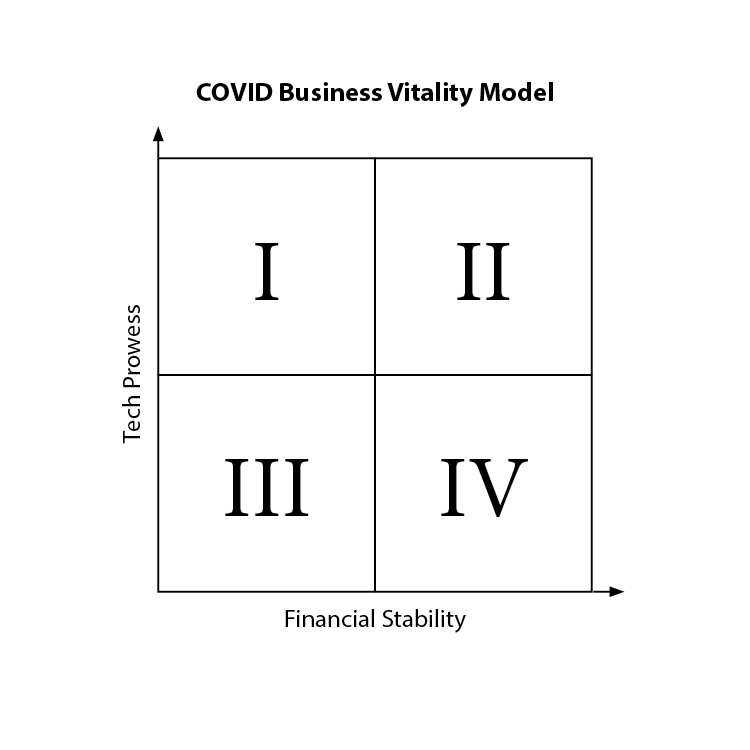You have /5 articles left.
Sign up for a free account or log in.
Higher education in the United States was in trouble long before the pandemic hit. The skyrocketing cost of attendance, the student debt crisis, the perceived lack of institutional responsiveness to workforce needs and the advent of convenient, contemporary alternatives have been among key factors sowing skepticism about the value of the traditional college degree.
Those challenges, along with shifting demographics, were already taking a toll on enrollments across the nation, resulting in many colleges and universities facing existential crises before the lockdown. Regional four-year institutions were anticipated to take the biggest hit.
Enter COVID -- rightly identified as an accelerant to change rather than a catalyst -- and institutions are grappling with problems now that were expected to happen eight to 10 years down the road. The COVID business paradigm, whereby the strong get stronger while the weak diminish, holds for higher education institutions, as well. What was supposed to happen in 2029 is happening now. Regional institutions across the land -- servants of their communities and lifters-up of their citizenry -- are closing or consolidating at an accelerating pace. And we have not yet even hit the dreaded enrollment cliff of 2026.
The pandemic is not solely to blame for unprecedented change. It is compounded by another accelerant: the Fourth Industrial Revolution. The convergence of rapid digital innovations with scientific advancements in the physical and biological realms have made for a fecund global laboratory in which innovations and enhancements are informing and complementing one another at blinding speed. The realities of today are yesterday’s science fiction. The advancements of the future are close enough for us to touch.
Technological prowess is determining its own winners and losers in COVID times. Firms like Amazon and Google, employing enhanced logistics, data analytics and 5G, are hitting new stratospheres of success (and world dominion -- a topic for another day). Industries reliant on traditional models -- in-store retail and movie theaters, for instance -- are closing fast.
The same technologies that are meting out haves and have-nots in the corporate realm are challenging an educational model that has gone basically unchanged, except for the price tag, for centuries. College and university “winners” are not only those institutions with strong financial margins but also those with early-to-market, successful bids in online delivery.
 Consider a scattershot matrix in which institutions land somewhere in one of four quadrants based on their financial stability and technological prowess. Most regional higher ed institutions find themselves in Quadrant III. Increasingly, Quadrant II institutions like Arizona State University and Southern New Hampshire University -- with scaled delivery, brand recognition and a sophisticated online product -- are attracting more of the audiences previously served by Quadrant III institutions. And for-profit institutions, which are often technologically advanced but have less financial stability, and which live mostly in Quadrant I, continue to vie for those same students. When we factor in the advent of corporate training options such as Google career certificates and educational partnerships between national universities and big tech firms, the prospects diminish for those institutions, like regional universities, that have traditionally shouldered the weight for serving underserved populations.
Consider a scattershot matrix in which institutions land somewhere in one of four quadrants based on their financial stability and technological prowess. Most regional higher ed institutions find themselves in Quadrant III. Increasingly, Quadrant II institutions like Arizona State University and Southern New Hampshire University -- with scaled delivery, brand recognition and a sophisticated online product -- are attracting more of the audiences previously served by Quadrant III institutions. And for-profit institutions, which are often technologically advanced but have less financial stability, and which live mostly in Quadrant I, continue to vie for those same students. When we factor in the advent of corporate training options such as Google career certificates and educational partnerships between national universities and big tech firms, the prospects diminish for those institutions, like regional universities, that have traditionally shouldered the weight for serving underserved populations.
What is a Quadrant III institution to do in an age in which mega-forces are upending the world as we know it? The answer is twofold: play to strengths and innovate.
Playing to Strengths
The core strengths of regional universities are engagement and distinctiveness. As “engaged” institutions, they have access to students, businesses and agencies that competitors do not. And they fulfill distinct community needs that others cannot.
Regional institutions have the matchless ability to recruit students in their regions robustly and personally. While college-going high school graduates often set their sights on more prestigious universities elsewhere, regional universities must ensure that they are the “first second choice” in an era in which students are more likely to attend college closer to home.
The same goes for nontraditional student recruitment. With the traditional student market in decline, institutions across the land have set their sights on nontraditional learners. Regional universities have the inside track in their respective geographies and must seal the deal by offering relevant programming and credentialing to meet the specific needs of their surrounding areas. Institutions must also ramp up diversity and inclusion efforts to recruit and support underrepresented traditional and nontraditional learners.
The engagement motif applies to on-campus activities as well. With small class sizes, professor-taught courses and a caring culture, regional colleges and universities provide a level of nurturing that large universities typically do not. With the knowledge that engagement is vital to student retention, regional institutions must embrace and enhance this innate advantage.
In times of declining enrollment, student retention takes on greater urgency. As automated interface increases in the digital age, so does people’s thirst for human interaction. Again, by leveraging high interpersonal engagement, regional institutions can have a distinct advantage.
Similarly, regional universities have the ability to engage their communities in ways that interlopers cannot. The American Association of State Colleges and Universities refers to that ability as serving as “stewards of place.” Community-aligned programs, research and service undergird symbiotic partnerships and collaborations that promote cultural and economic vitality.
Such relationships underscore the distinctiveness of regional universities. Consider recent advice books on marketing strategy: in Zero to One, Peter Thiel eschews competition in favor of finding untapped niches, and in Blue Ocean Strategy, W. Chan Kim and Renée Mauborgne promote differentiation in uncovering new market spaces. What has become a clarion call to entrepreneurs seeking an advantage represents a natural benefit for regional institutions. They must capitalize on what makes them unique in their respective geographies.
Innovation
Regional universities must challenge conventional ways of thinking and doing in order to succeed in a postvaccine paradigm. The combined effects of COVID, the Fourth Industrial Revolution and shifting demographics require them to do more than simply scaling the existing model. Universities will have to re-examine the very core of their function. They will need to:
- Make data-informed decisions about which programs and services to prioritize, given diminished resources. Regional institutions can take advantage of their smaller size and infrastructure to implement decisions quickly.
- Make tough choices about academic programs. The current workplace rewards those who understand and practice continual, nonlinear learning. As artificial intelligence assumes more human tasks, learners must develop their distinctly human skills of invention, creativity and discovery. Innovative faculty members must keep a finger on the pulse of industry, retooling and building academic programs that enable students to compete in a high-speed, ambiguous job market.
- Diversify delivery of academic programs. Colleges and universities must reach new audiences, particularly lifelong learners, without diluting resources. Most regional institutions don’t have the capacity to deliver degrees across multiple markets (e.g., traditional, online, evenings, executive-style and so on). That is why the HyFlex delivery model, which enables an instructor in a single section to engage both face-to-face and online learners, emerges as the win-win modality.
- Diversify their revenue streams. That might include offering more facilities rentals, summer camps (for K-12 students left behind by COVID), continuing education programs, professional services and the like. Institutions won’t be able to budget-cut their way to success. They will need to capitalize on their visibility and reputation to monetize by fulfilling specific community needs.
- Partner and collaborate across colleges and universities. Recently, five New Mexico colleges announced a partnership to achieve efficiencies by unifying operations on several fronts. Institutions belonging to systems have a natural advantage to securing collaborations across programs and services. But such relationships will hinge on a variety of factors unrelated to tier or geography, including research initiatives, academic programs, technologies and infrastructure, and, in the case of the University Innovation Alliance, mission.
- Rethink organizational structure. Regional colleges will need to redesign with the future in mind. Well-conceived organizational realignment will enable institutions to respond more effectively to new opportunities and challenges, and to identify forward-looking leadership talent.
- Become more responsive -- perpetually. A frequent criticism of higher education is its lack of responsiveness to a rapidly evolving job market and social challenges. Successful institutions will design an infrastructure that enables perpetual change. American colleges and universities contain our best intellectuals and the most diverse stores of brainpower on the planet; they must anticipate change rather than just react to it. Institutions that are able to achieve a change-oriented culture, with a spirit of servitude and infinite possibility, will reap rewards.
Higher education is in the midst of colossal change, and many regional institutions stand at the portal of judgment. They must innovate aggressively, transforming their model and culture while capitalizing on the strengths that make them so valuable. A generation of learners is depending on them.








